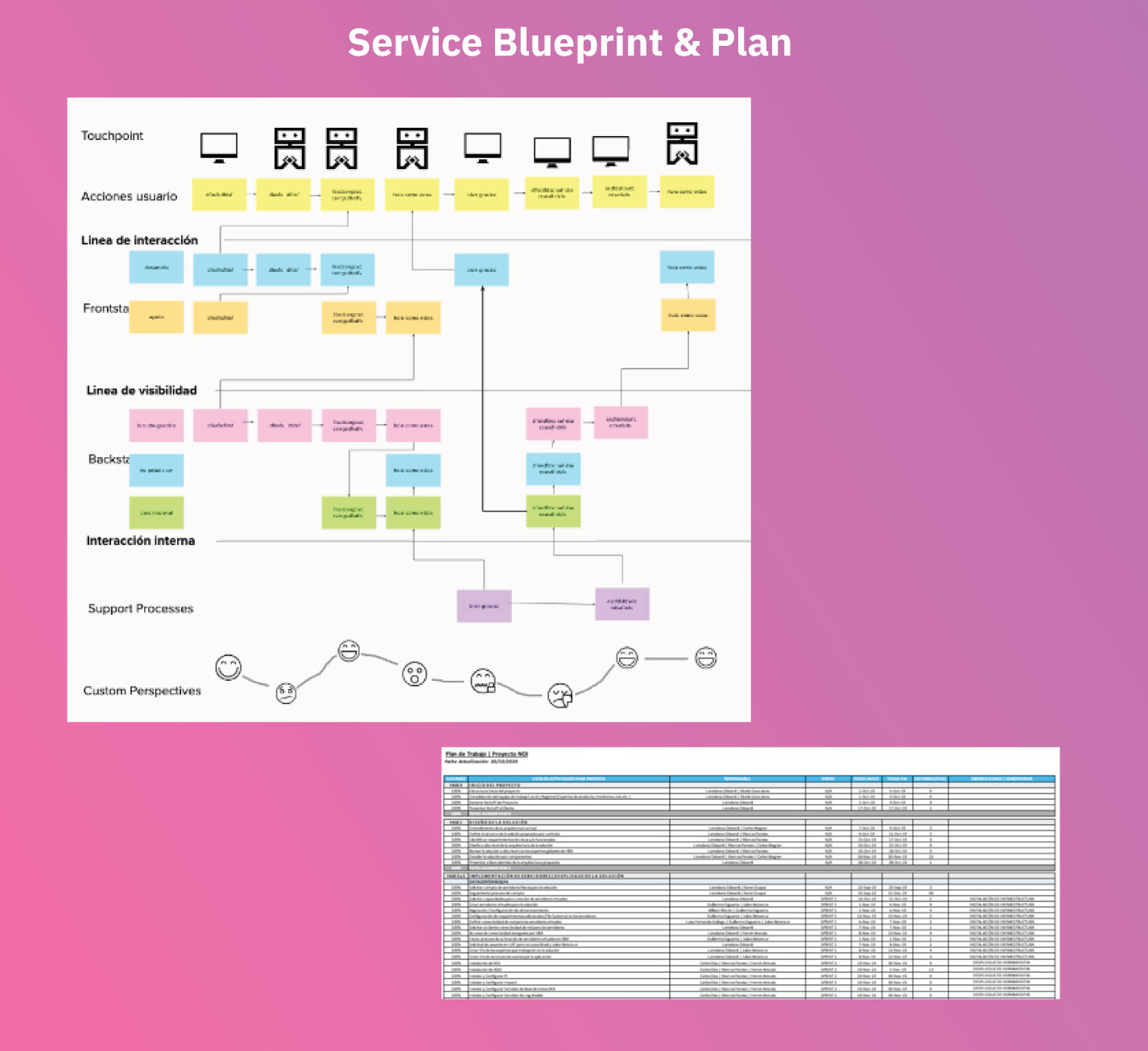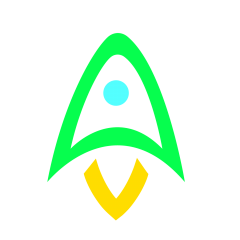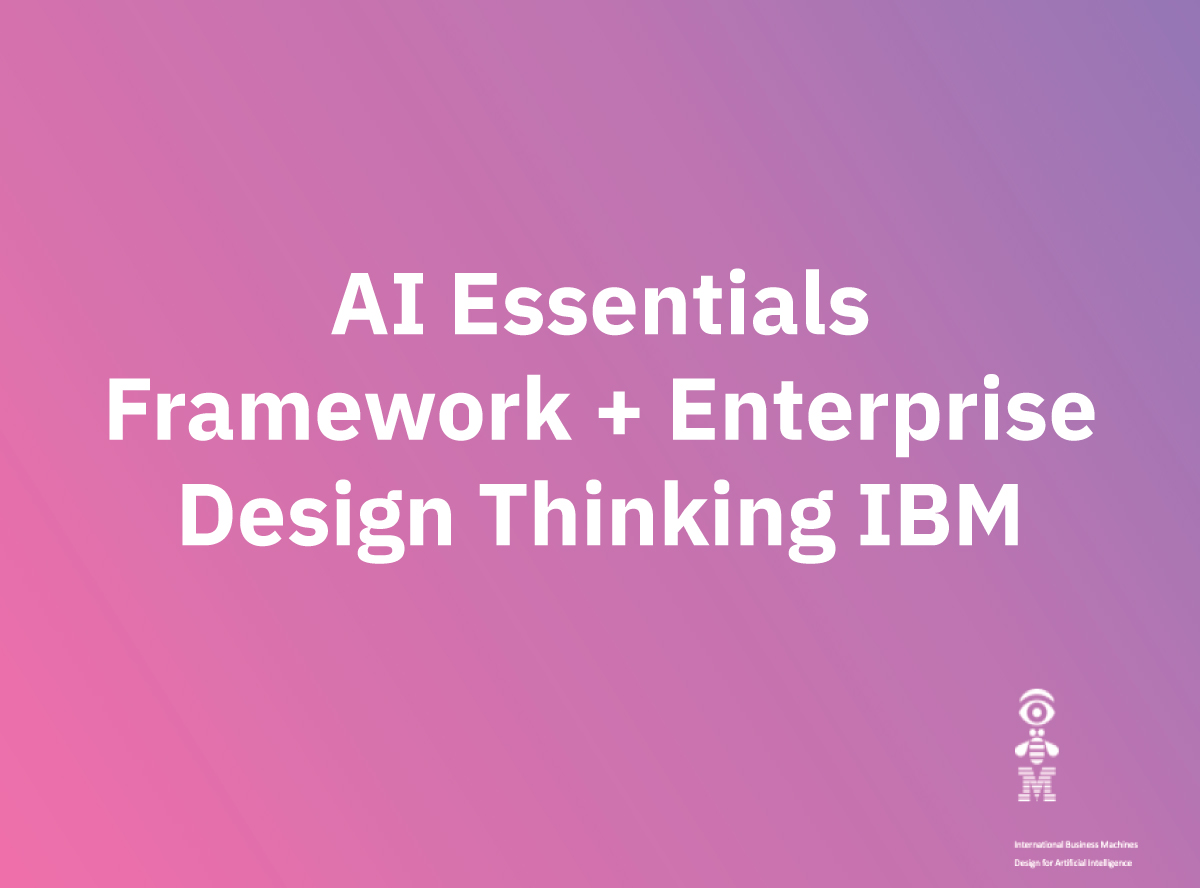Client: Confidential
Industry: Technology
My role: Service Design
Year: 2021
How we manage to take advantage of artificial intelligence, bringing value for the user, with the IBM AI framework and Enterprise Design Thinking
Why AI + DT?
Artificial intelligence: systems that can simulate human intelligence and thought processes.
AI design: the purpose, planning, or intent behind simulated human thought processes, so… Higher quality outcomes are faster than humanly possible.
What framework do we use?
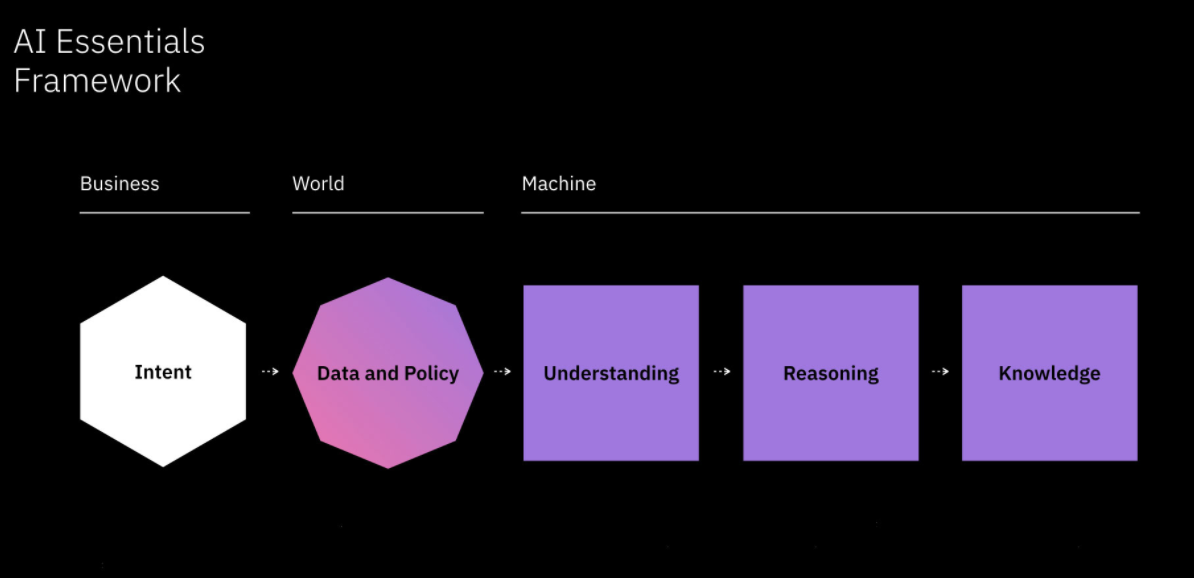
IBM – AI Essentials Framework
The AI Essentials Framework is a specific grouping of activities to work through so that your team is aligned with your strategy for an AI experience. There are five phases to the framework:
- Intent: Align your solution’s business and user intent(s).
- Data: Document the data you could use to make your idea a reality.
- Understanding: Determine what you will need to teach your AI.
- Reasoning: Bring your ideas down to earth.
- Knowledge: Brainstorm the direct and indirect effects of your AI.
This information was taken from https://www.ibm.com/design/thinking/page/courses/AI_Essentials/topic/Introduction/01/01/01/0
THE BACKGROUND
The company grows very fast, and technology does not have to support the help desk.
THE CHALLENGE
What are all the ways to use artificial intelligence at the help desk and make the user comfortable with self-management?
Know the AI Ecosystem; this part is confidential, but we initially consider and map what we know about all the ecosystem that intervenes in the challenge; we regard which are the organization’s needs? The human, which are their unique needs and the problems that need to be solved? Was the world, how does the world relate to this context, and the last one, What data do we have access to, and the policies that bind it?
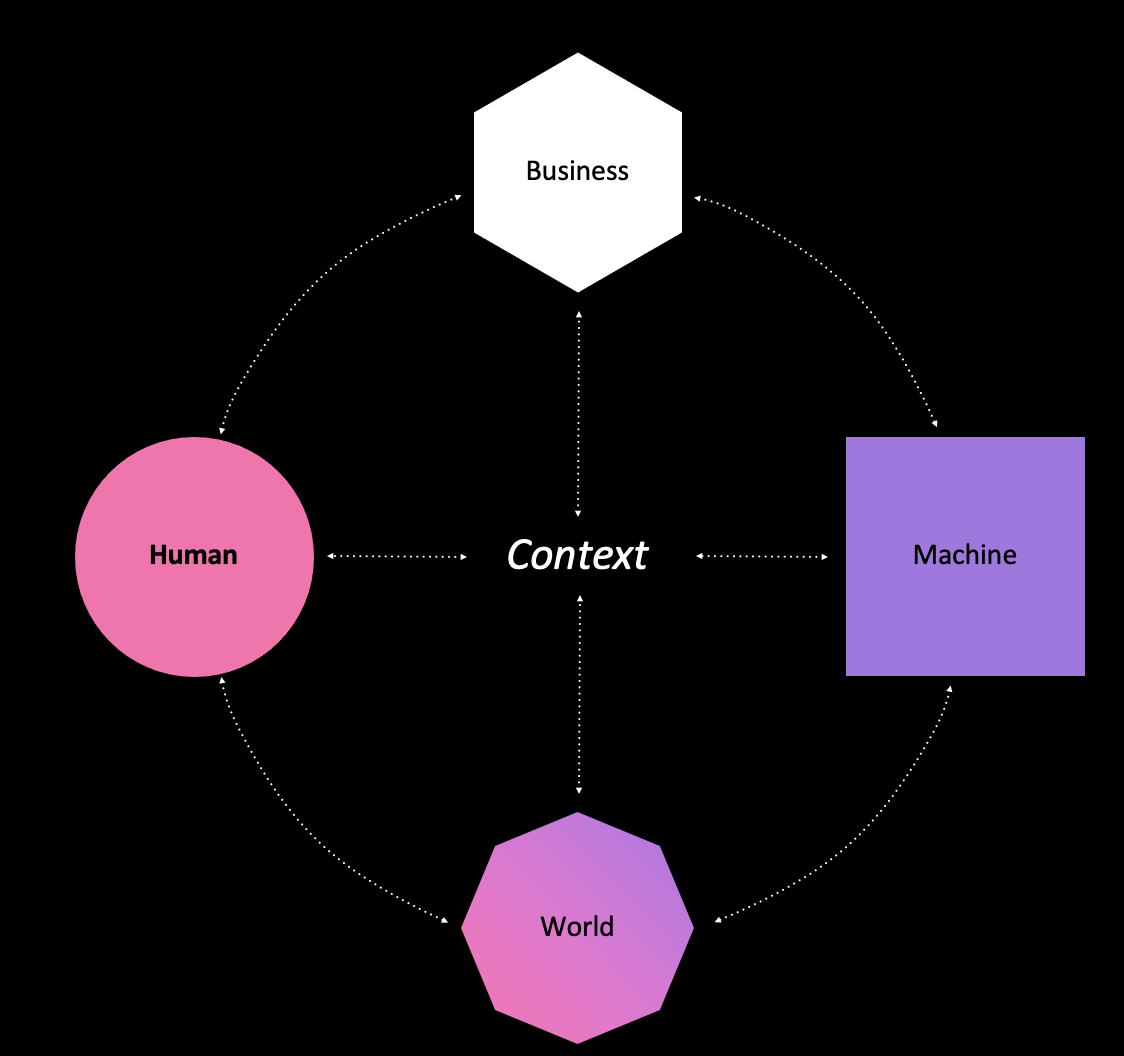
THE RESEARCH
Co-create – Discovery (human)
We did the discovery phase; this part helps us to identify needs, issues, journey as is, and stakeholders map (sponsor, users)…
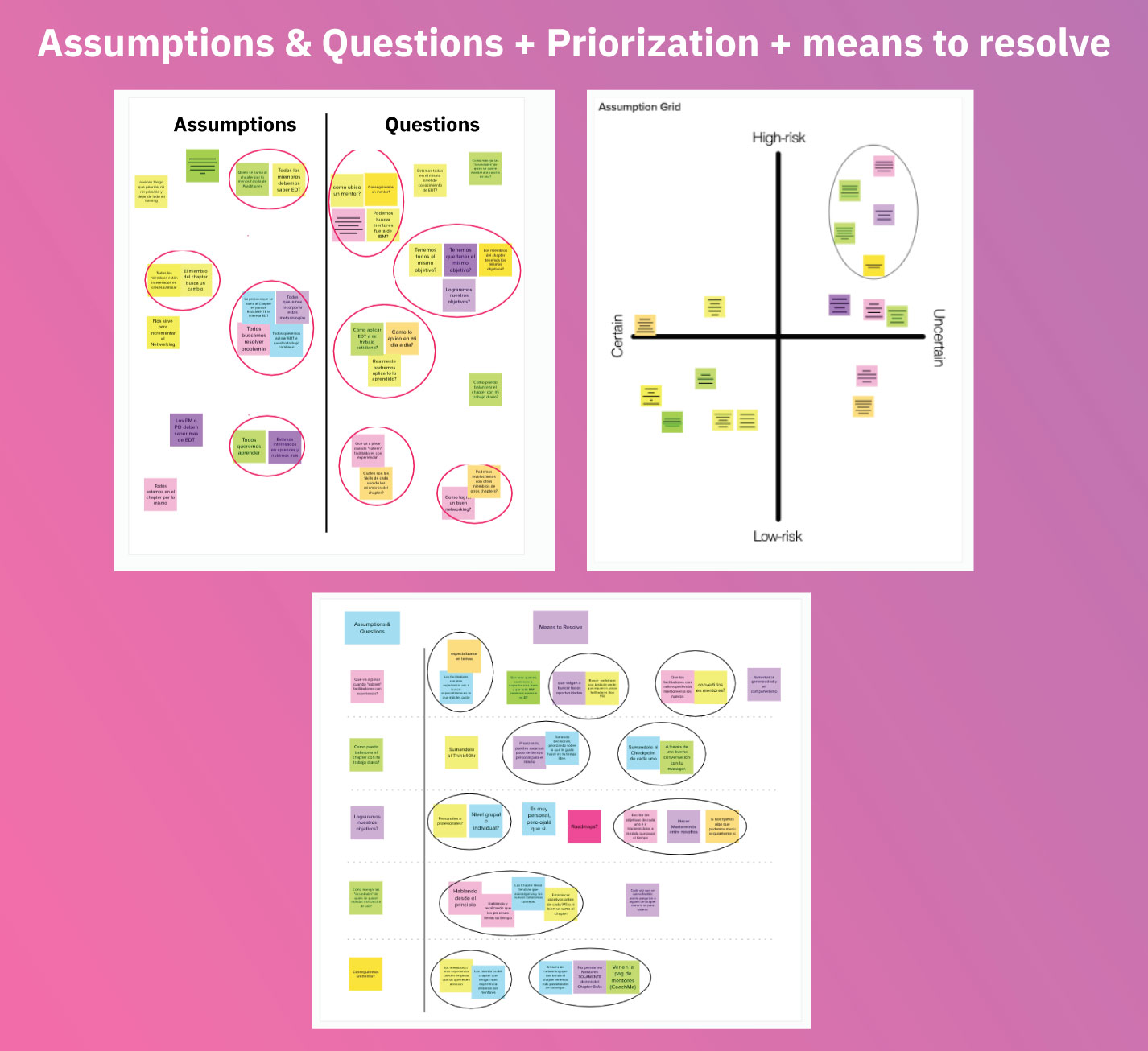
We did an empathy map and persona, focusing on a persona for AI, which is different from an average person because it is only with things we can use since the AI framework.
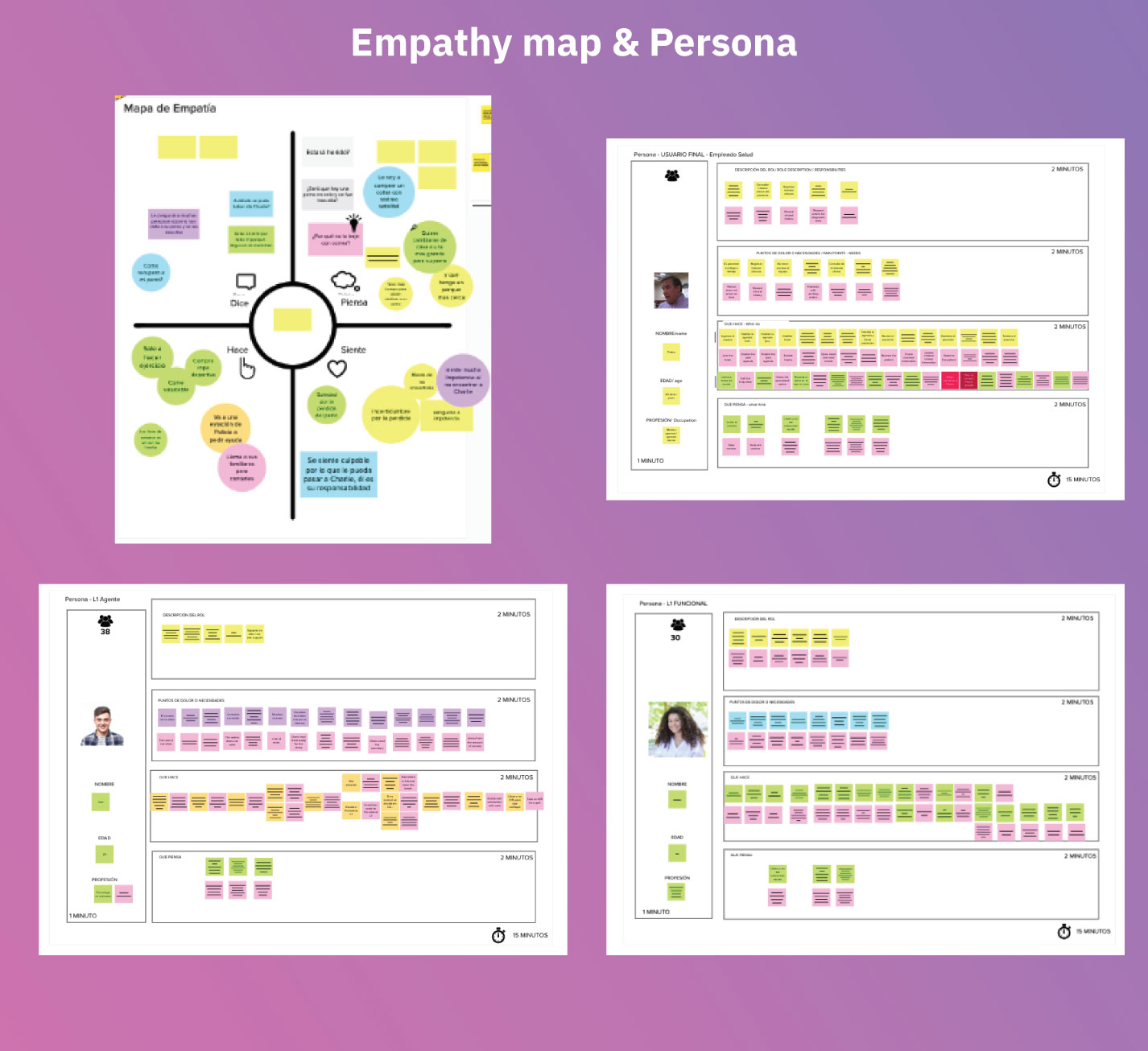
With journey as is and scenario map, we were able to identify how was the current process to improve, which were all the people that were involucrate in the process, since technology, business, talent, and how was the user experience end to end.
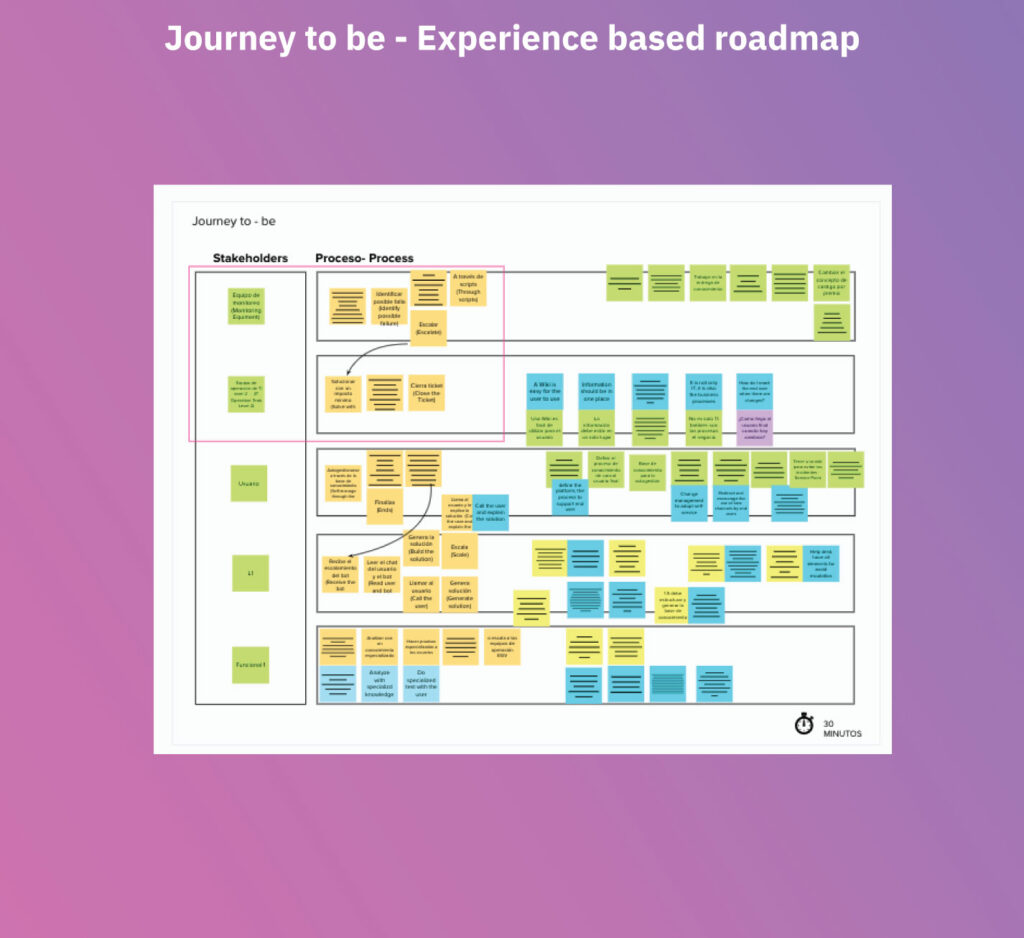
Co-create Envision (business)
In this part, we identify which is the intent among users and businesses. This helps us determine why you would or wouldn’t use AI in your effort.
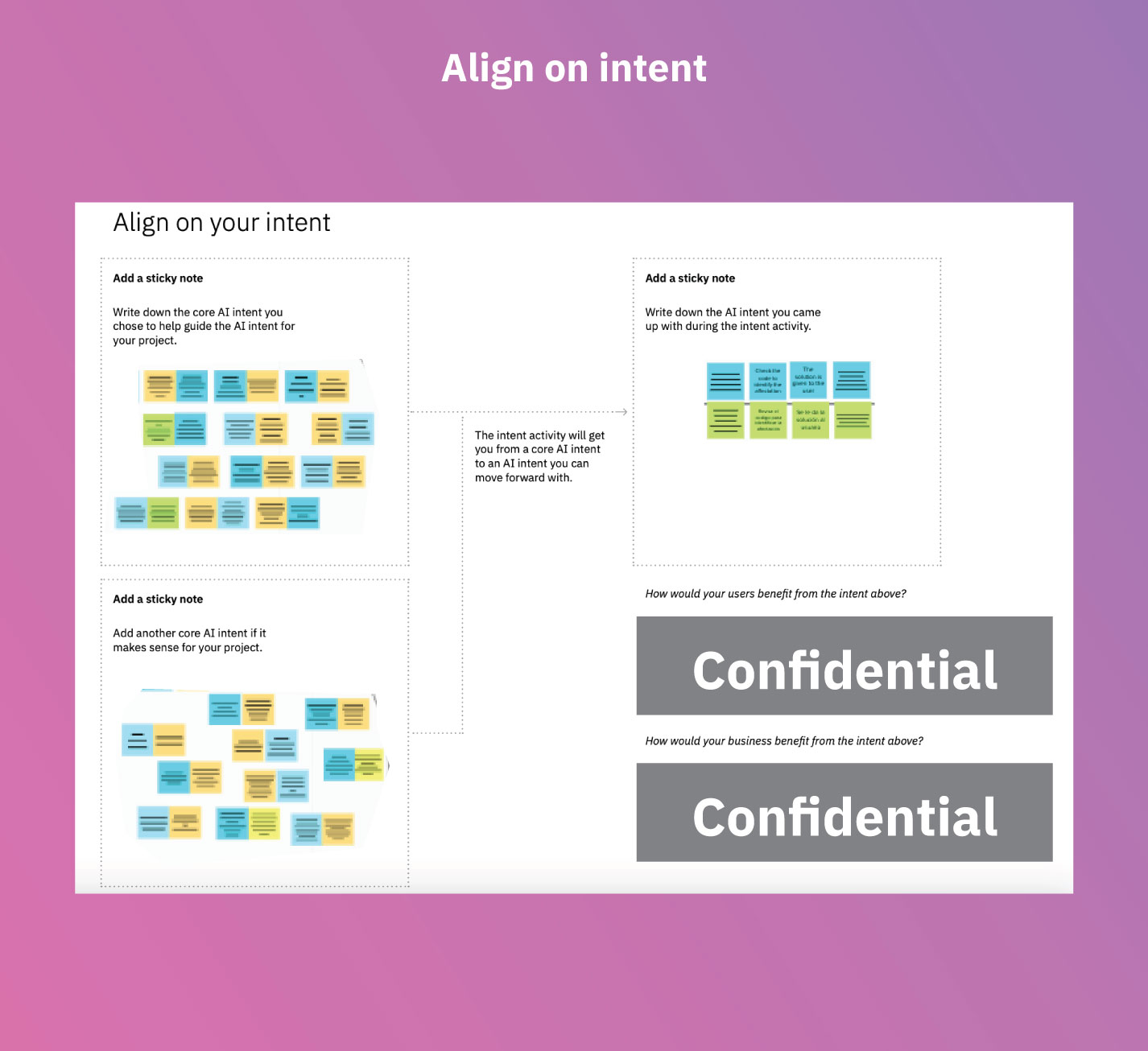
Big ideas that support the effort…
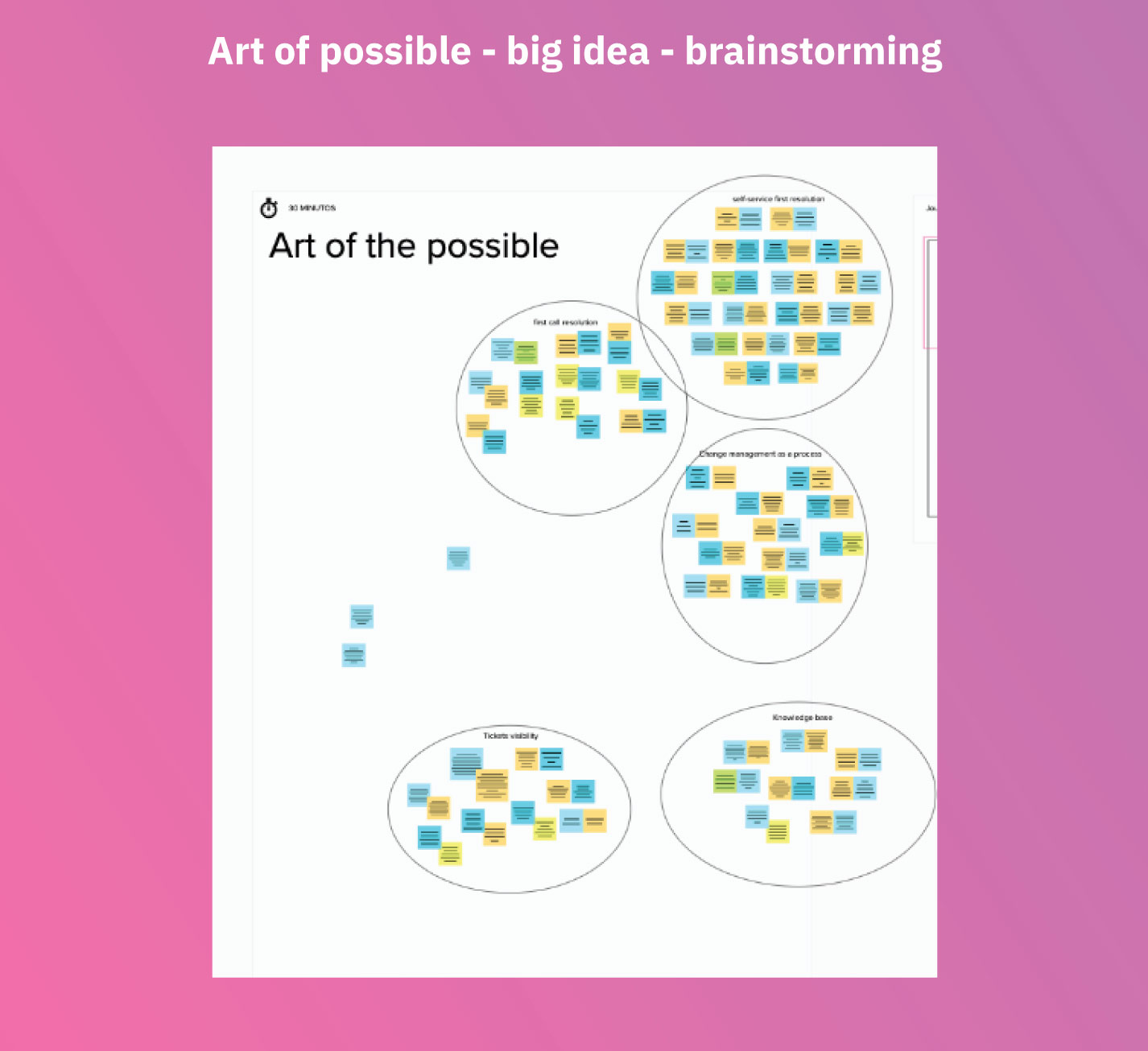
THE DISCOVER
World
Now we collected all the source data that we had and the data we needed

Machine
In this part, we identify what was a machine needs to understand from the data so it can reason.
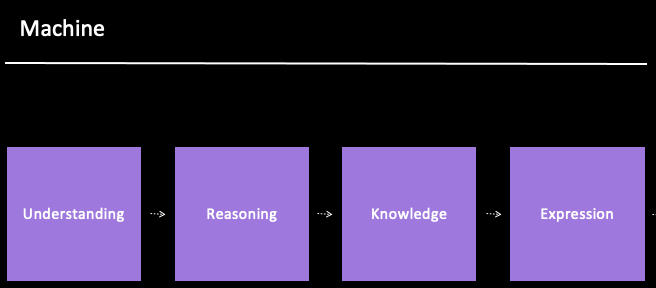
Understanding
We defined what we will need to teach your AI. And explain what data is confidential, for example, personal information (phone number, email address)

Now is time to break down each data source relevant to what our AI needs to learn.
Reasoning
Ideas down to the earth: In this part, we made the hypothesis, we found all the features that will have our solution, our system, and how it relates to the data.
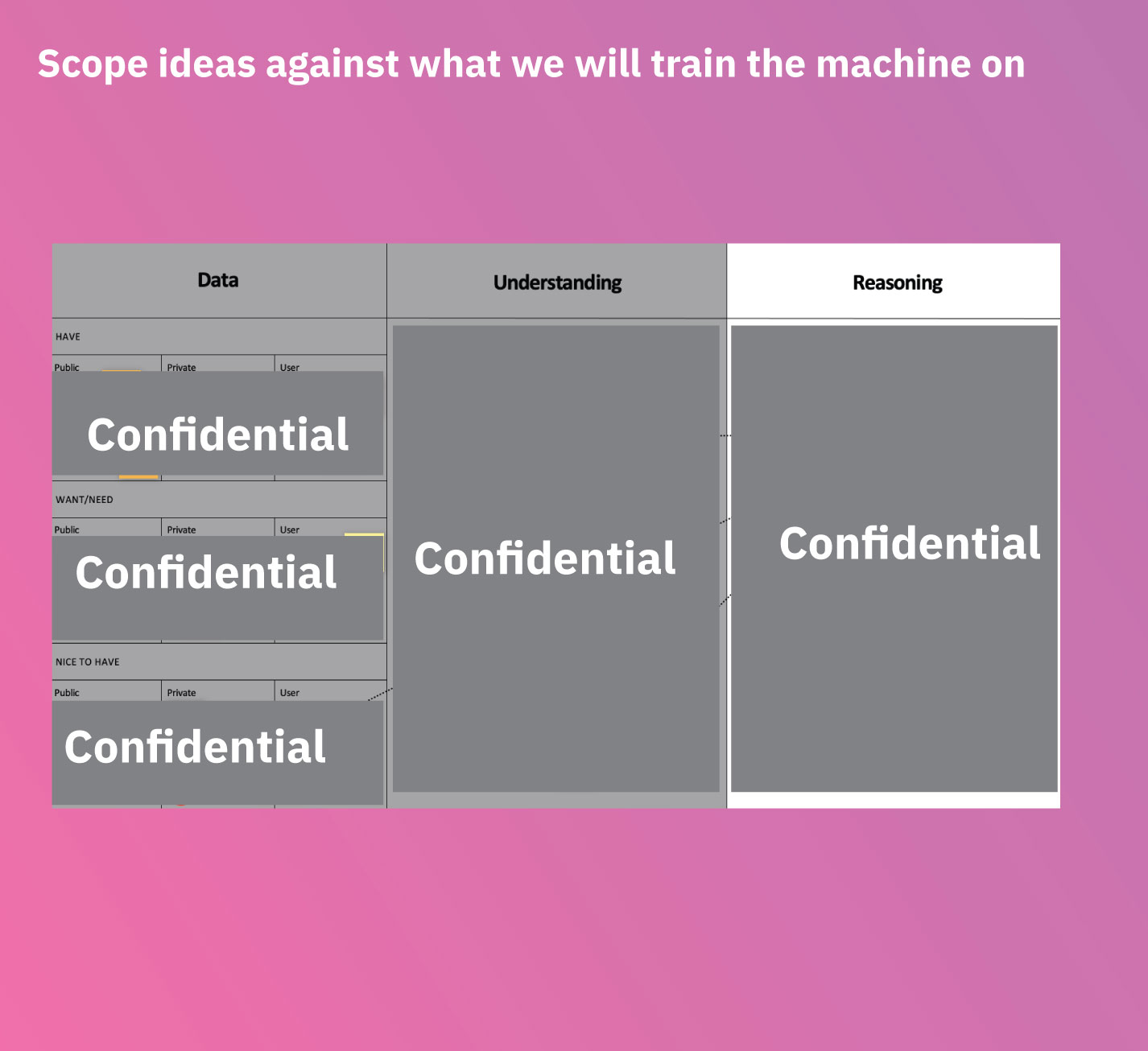
Knowledge
We need to know what will be the direct and indirect effects on the business, positive and negative, and if they are primary (intended and known), secondary (unintended benefit), tertiary (unintended consequences)
Expression
This is the AI’s UI, I can’t show you, but in this part, we design the UI solution, the words, the relations, the expressions, and the visual interface.
THE CONCEPT
Customer Journey to be
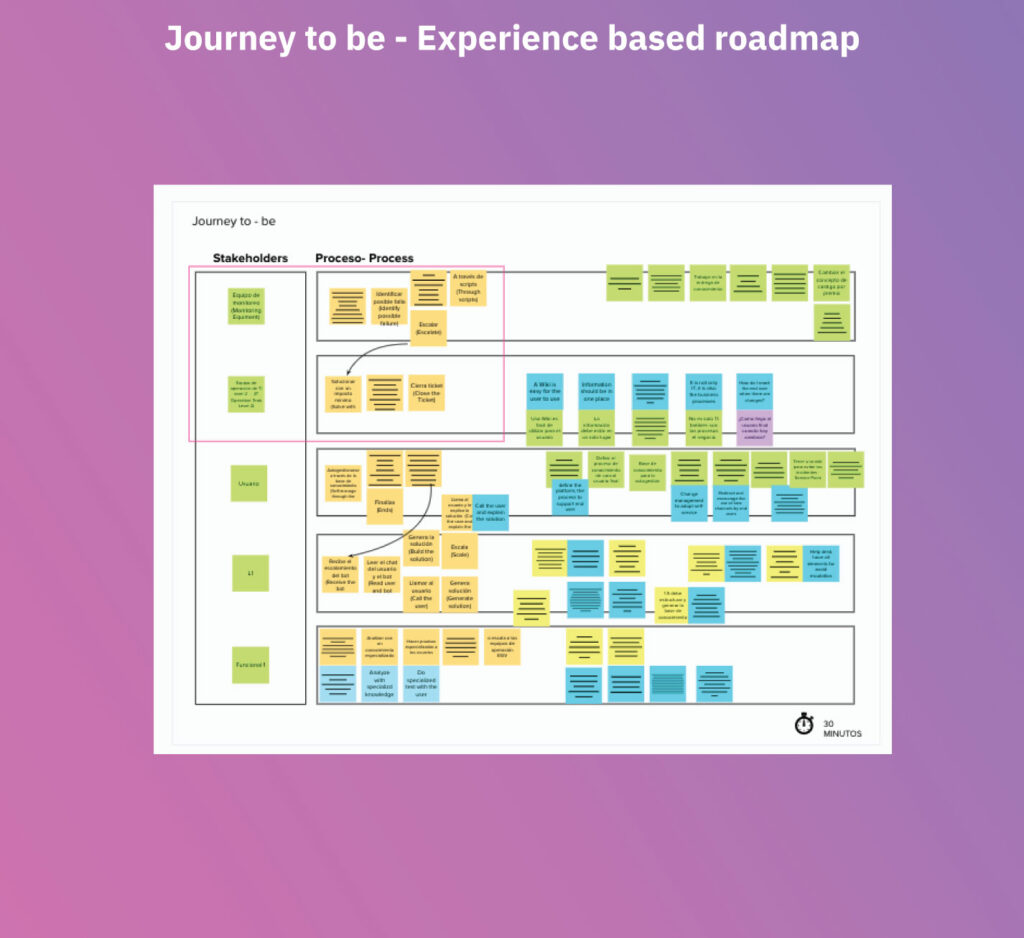
THE RESULT
In the last phase, we define an MVP with a Service Blueprint and an agile plan with roles and first OKRs. This plan was elaborate on sprints, and each sprint with valuable outcomes.
